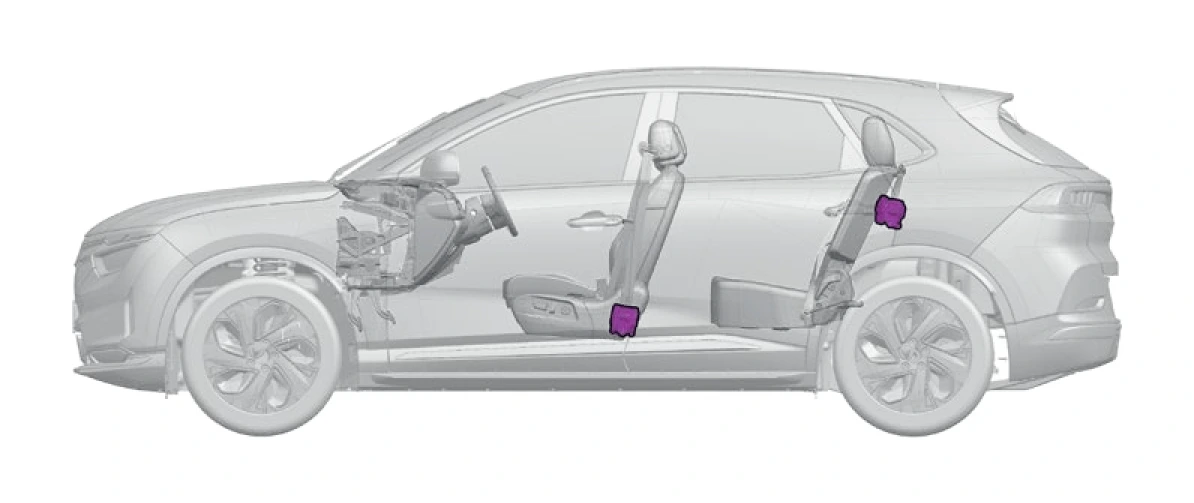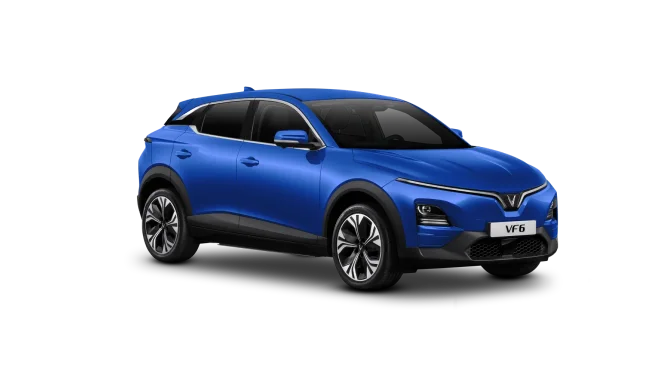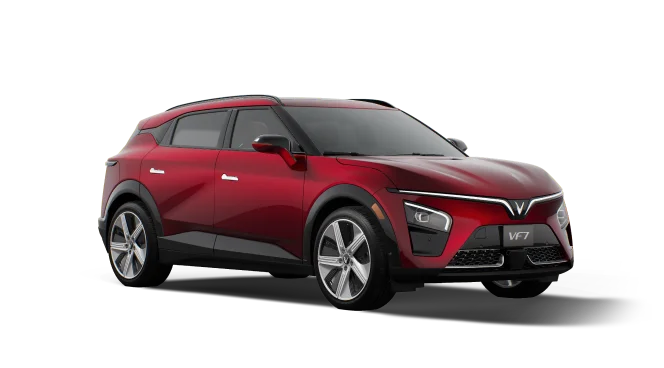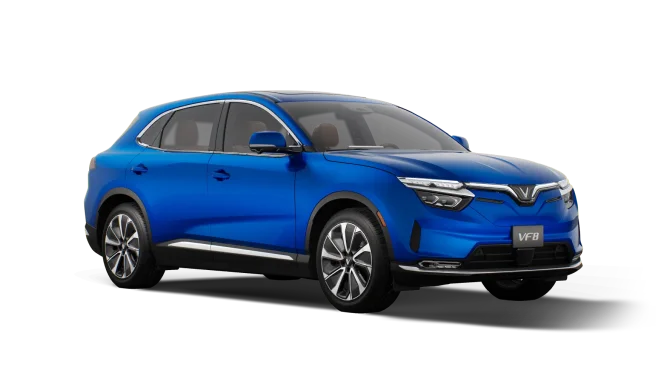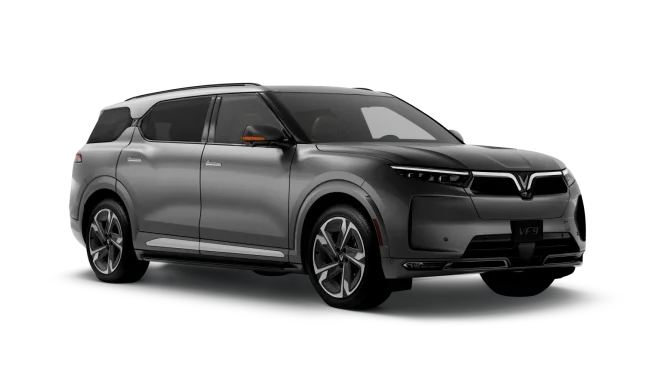First Responder Guide
VinFast VF8 EV SUV

Legal notice:
This guide was created only for first and second responders who have specific training in the area of technical assistance following road accidents, and are therefore able to carry out the activities described in this guide. Specifications and optional equipment for VinFast vehicles and the range of vehicles made by VinFast are subject to ongoing changes. VinFast therefore explicitly reserves the right to make changes or modifications to this guide at any time. The information factors in the state of knowledge at the date of creation.
Please note:
The information in this guide is not intended for end customers, nor is it intended for workshops and dealerships. End customers can find information about the functions of their vehicles and important safety information on vehicle and occupant safety in the owner’s manual of the respective VinFast vehicle. Workshops and authorized dealers can obtain repair information from the usual sources known to them.
This First Responder Guide covers emergency vehicle shutdown information for the VinFast VF8 EV SUV. The VF8 is an all-electric vehicle and contains High Voltage (HV) components. The HV battery is the main energy source. High voltage refers to systems with DC voltage above 60 V or AC voltage above 30 V.
The information in this guide is intended for use only by qualified and trained first responders. This guide describes how to identify HV components and safely handle them during an emergency. It also explains how to disable the HV system and provides safety information specific to the VF8, including high-strength materials used in the vehicle structure. Failure to follow the practices recommended in this guide can result in serious injury or death.
Warning
DANGER
Always assume that HV parts are energized.Always wear the appropriate Personal Protective Equipment (PPE). Contact with HV current can cause serious injury or death.
Recovery of a submerged vehicle without appropriate PPE can result in serious injury or death.
Batteries can release flammable or toxic gases if they are damaged.
Gases can be ignited by a spark or heat source. Pressure from expanding gases can build up in battery packs and cause an explosion. These situations can lead to serious injury or death.
WARNING
Do not use the HV battery to lift the vehicle. The HV battery could become damaged. This increases the risk of injury.
If the electrical vehicle is on fire, it can be extinguished with large quantities of water. Use water from a hydrant or other nearby water sources whenever possible.
Lithium-ion batteries can spontaneously self-ignite. Batteries can reignite after a fire has been suppressed. This can occur several hours after an event that causes damage or as the result of incorrect use. Always wear the appropriate PPE.
NOTES
PPE must be worn for all practices discussed in this guide. Appropriate PPE is required for the procedure to disable the HV system. PPE may include rubber gloves, safety glasses, electrical hazard footwear, earplugs, hardhats and face shields, respirators, or arc-rated clothing and undergarments.
0. Rescue Sheet


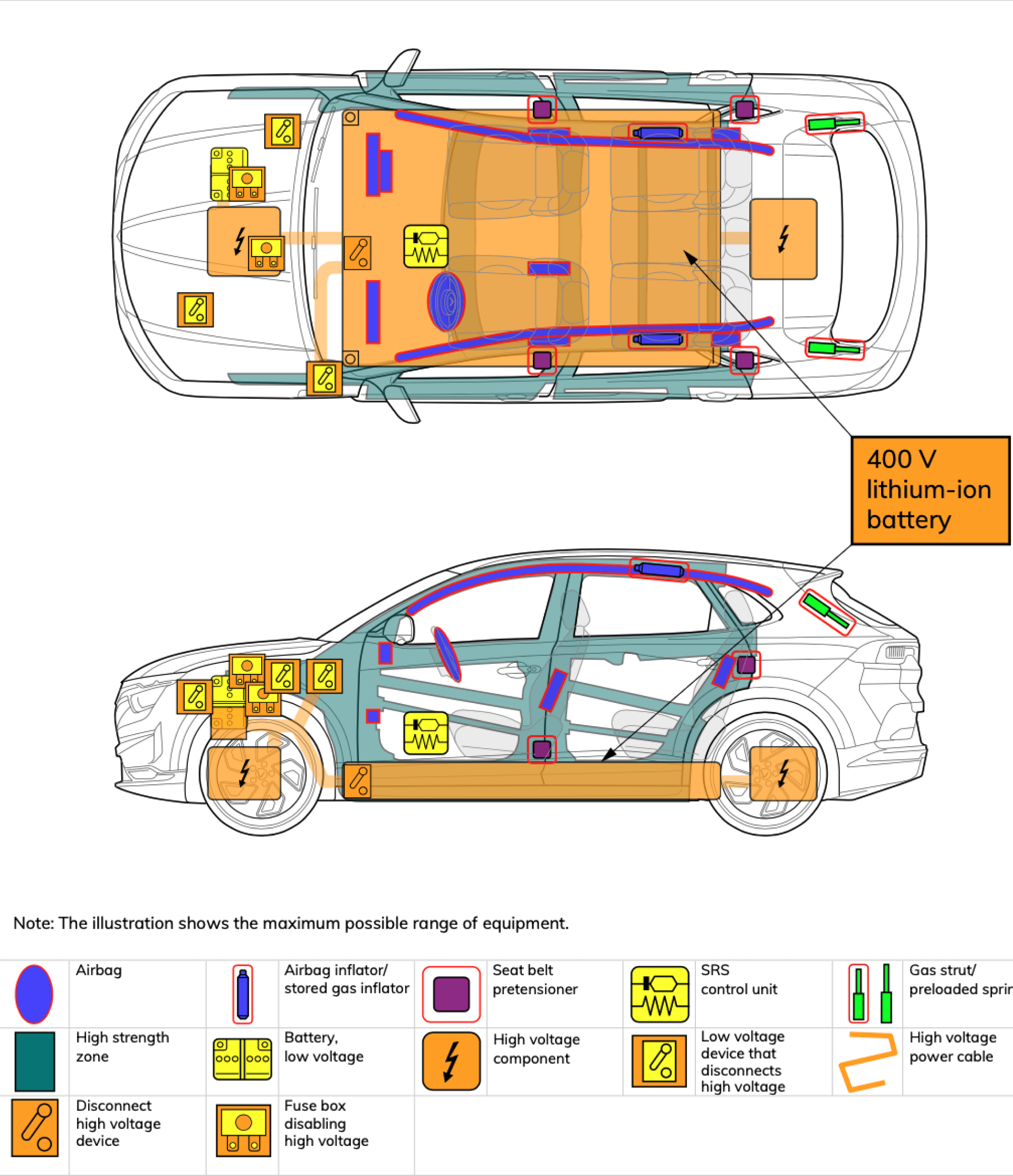
1. Vehicle Identification
Exterior badges identify the VinFast VF8 EV SUV. Each model has distinguishing features. Individual models can be identified by body shape, size, and vehicle design.
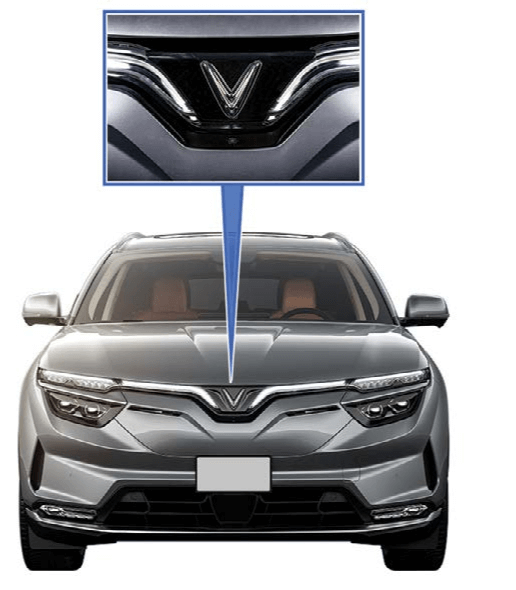
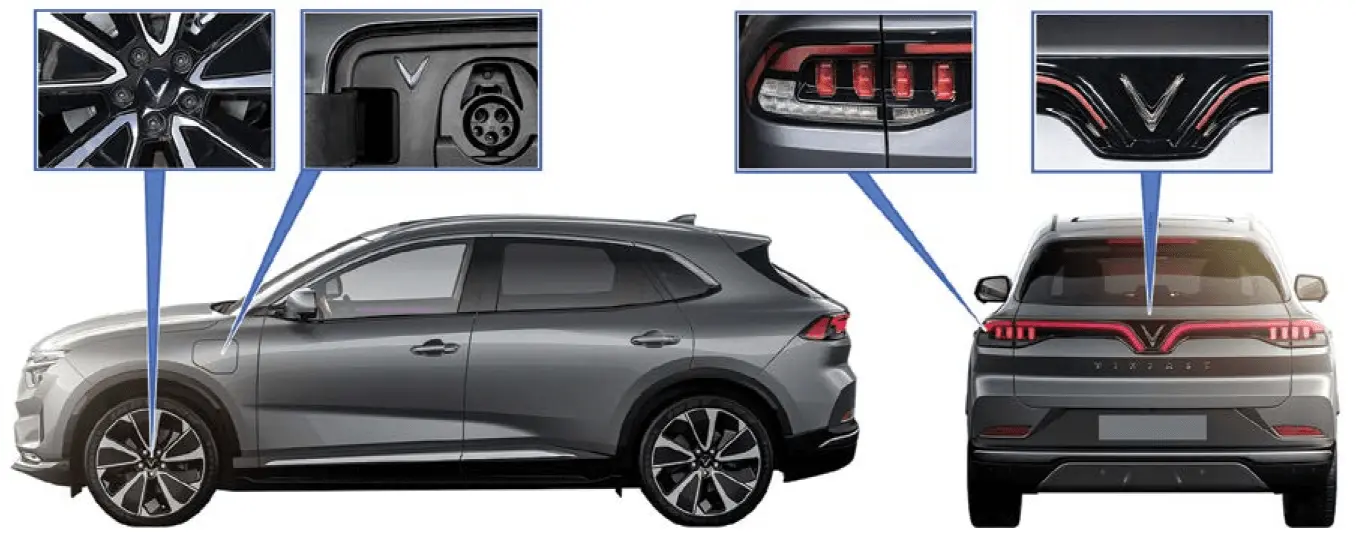
The VIN is located in three places on the vehicle.
-
Look through the windshield on the driver’s side. A stamped plate on the dashboard provides the VIN.
-
Lift the carpet flap to reveal a stamped plate that provides the VIN.
-
On the main display unit, navigate to Settings > About > Vehicle.
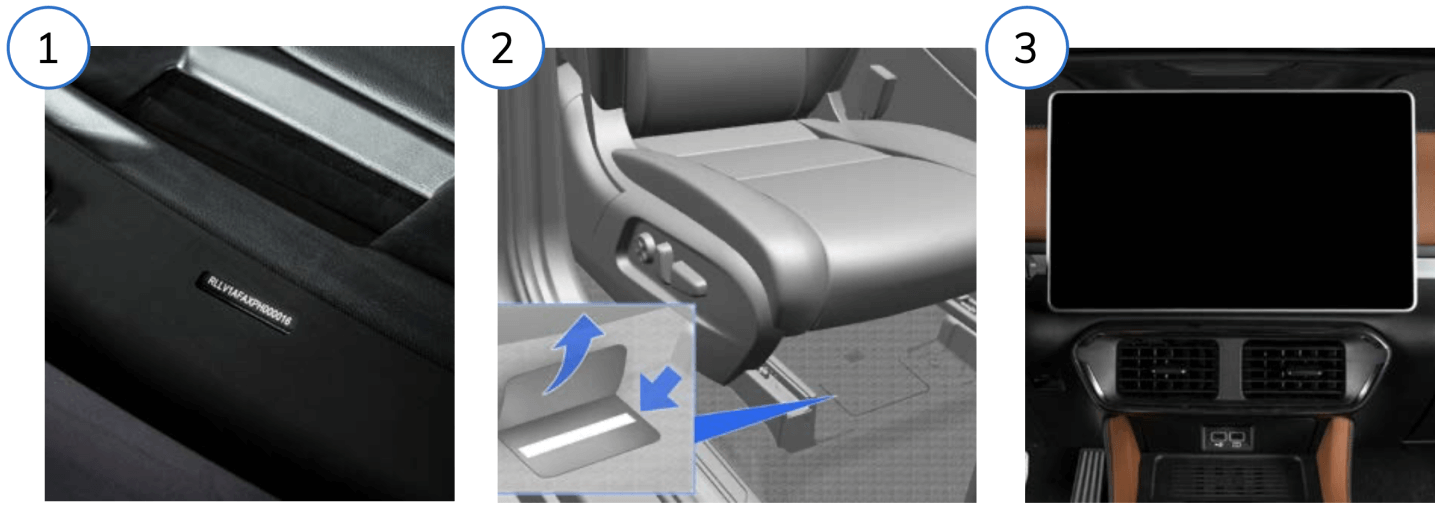
2. Stabilizing & Lifting
Wheel rotation generates high voltage and must be prevented while stabilizing the vehicle.
Stabilizing
Step 1: Press the Park (P) button on the driver console to engage the parking brake.
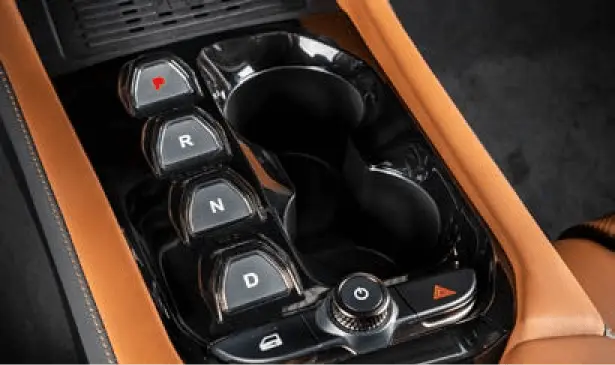
Step 2: Chock the wheels to prevent movement in case the parking brake fails.
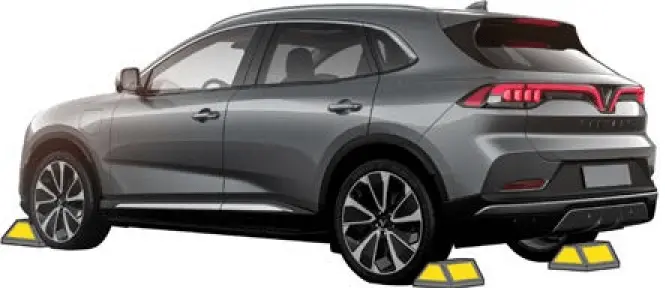
Pushing
The VF8 can be pushed short distances to clear the roadway when safety allows. Press the brake pedal and the “N” button on the driver console to put the vehicle in neutral.
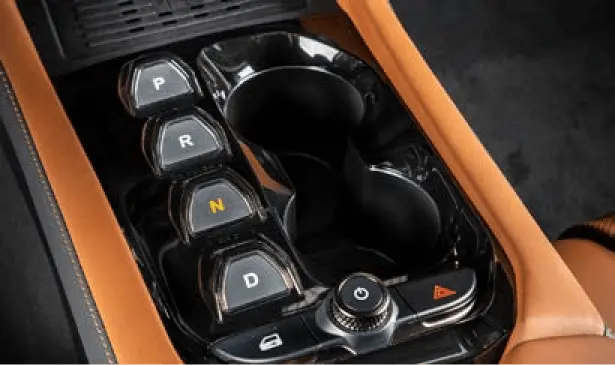
Lifting
WARNING
Do not use the HV battery to lift the vehicle. The HV battery could become damaged. This increases the risk of injury.
Extreme caution is required when lifting the vehicle. The VF8 has a 400-volt lithium-ion HV battery mounted underneath the floor pan. When lifting or jacking the vehicle, only use the designated lifting points marked in red.
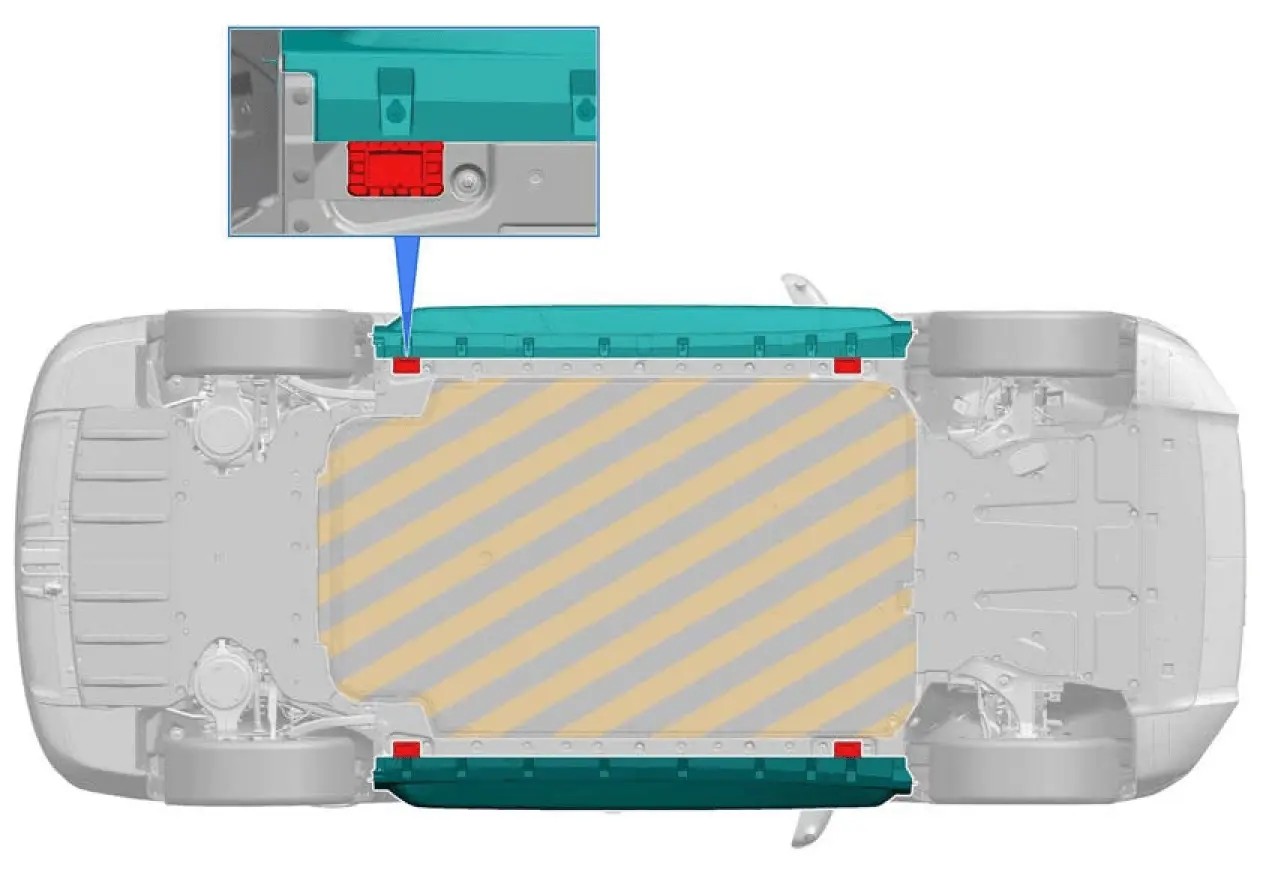
NOTES
This guidance applies only to non-deformed vehicles. If the VF8 involved in a crash is deformed, first responders must decide how to safely lift the vehicle.
3. Disable Direct Hazards
There are two methods to disable the High Voltage system:
Method 1
Step 1:
On the touchscreen, press the Unlock Charge Door button. Then, push the charge port flap once to open it.
To open it manually, pull a Bowden cable within the trunk and next to the hood hinge to release the flap. Then, push the charge port flap once to open it. For details on opening the hood, see HERE.
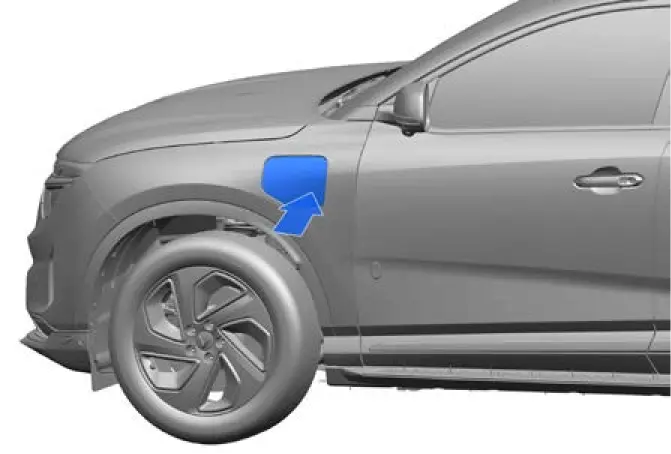
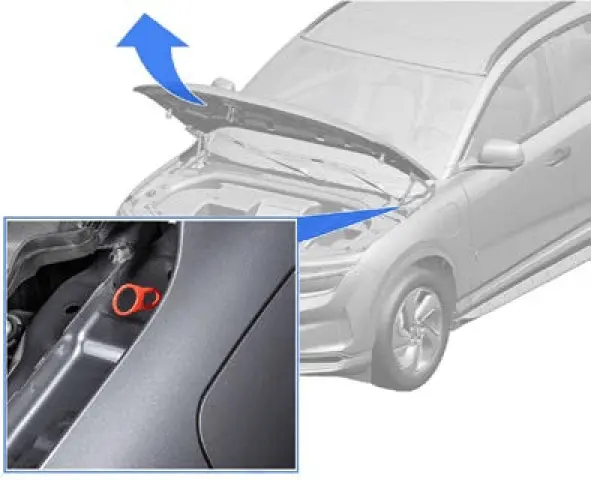
A Mechanical Service Disconnect (MSD) is located within the charge port. The MSD is low voltage and interrupts the 12V power supply to the HV battery. Disconnecting the MSD initiates an HV system shutdown.
Step 2:
Remove the MSD as follows:
-
Remove the security flap.
-
Pull the red safety cap.
-
Pull the MSD tab.
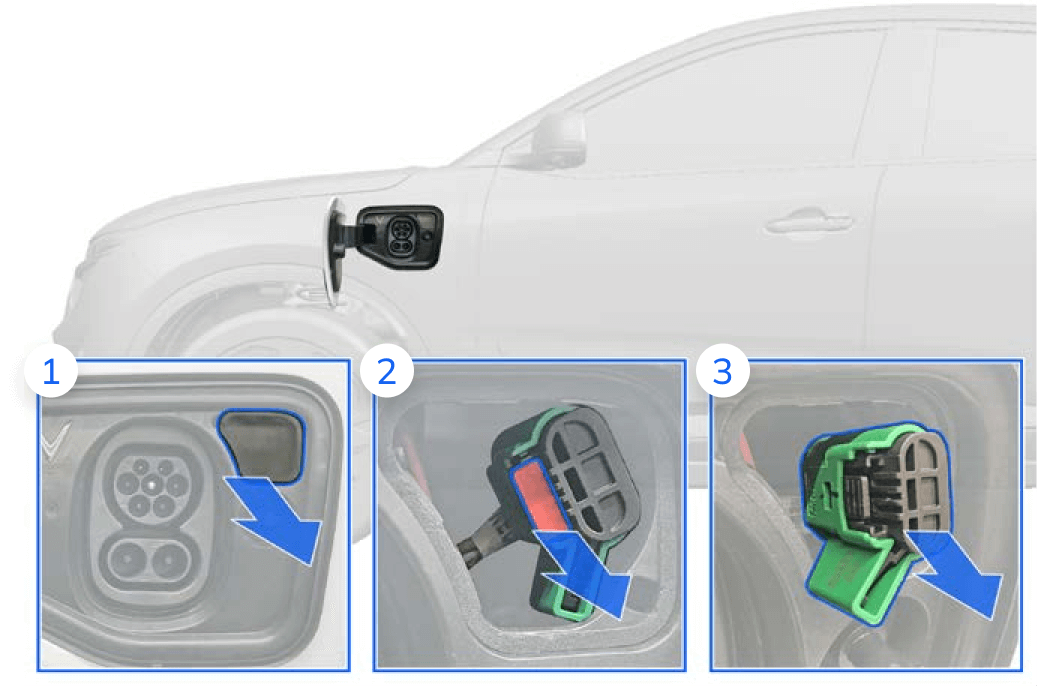
If a normal shutdown process is not possible:
Method 2
-
There are two first responder cut loops in the engine compartment. One is located behind the coolant tank, and one is located behind the front trunk emergency release. The right-hand cut loop requires the removal of the entire front trunk (frunk) assembly and its attaching parts.
-
Lift the plastic flap to access the left-hand first responder cut loop.
-
Cut the negative cable of the 12V battery. Look for the cut loop label and cut the cable twice.
Cutting the loop will interrupt the 12V power to the HV battery, which opens the contactors in the HV battery. Two cuts are required to prevent the wires from accidentally contacting each other.
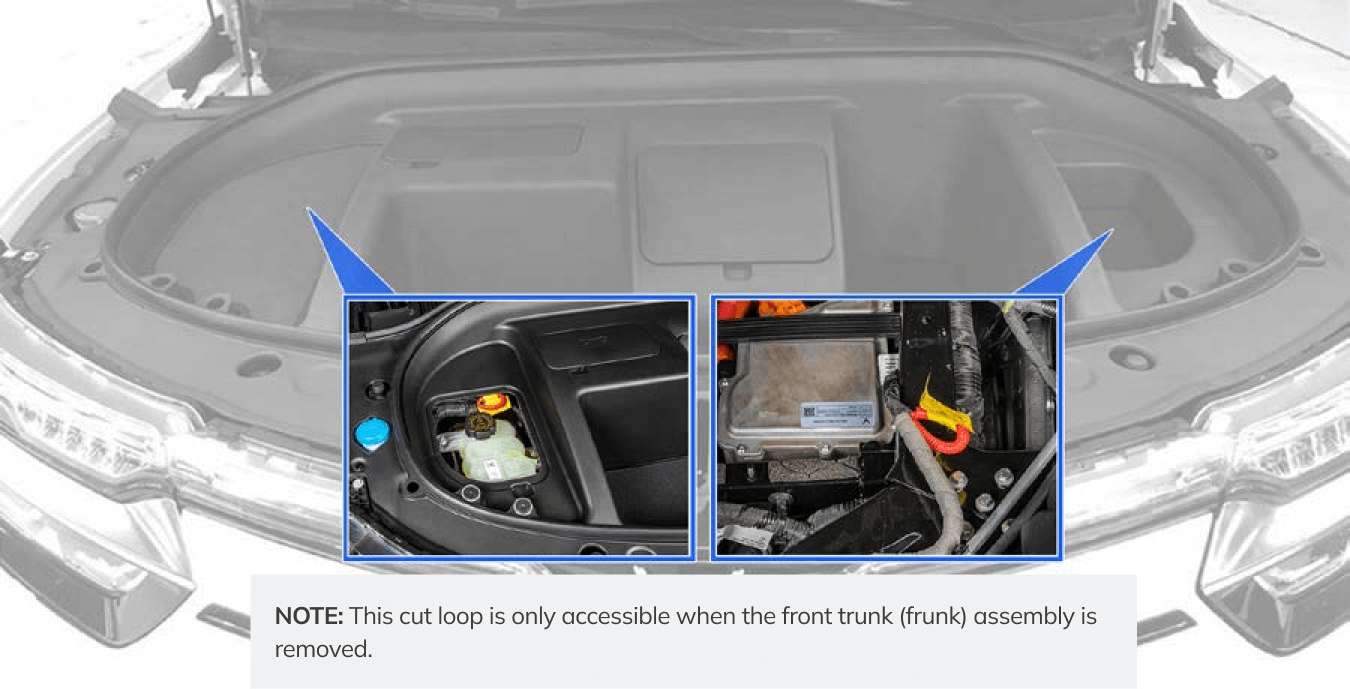
NOTES
It takes about 5 minutes for the high voltage to dissipate.
If the key is outside the vehicle, the VF8 will shutdown automatically. Keeping the key at least 19 feet away from the vehicle will prevent accidental operation of electrical systems.
Disable HV System While Charging
The charging plug must be removed to disable the HV system during charging. The charging plug can only be removed when the vehicle’s doors are unlocked. If the charging plug is not removed from the charging port within 60 seconds, charging will resume.
Mechanical emergency release cables are located on the left side within the trunk compartment and next to the hood hinge. The charging handle emergency release cable is near the wiper motor.
To stop the charging process and release the charging handle locking pin, you must press “Stop Charging” on the main display unit.
To release the charging plug manually:
1. Press the Stop Charging button on the main display unit inside the vehicle. 2. Pull the mechanical release cable (1) to disconnect the charging plug.
2. Pull the mechanical release cable (1) to disconnect the charging plug.
WARNING
Make sure the vehicle is powered off. Contact with moving wiper motor mechanism may cause serious injury.
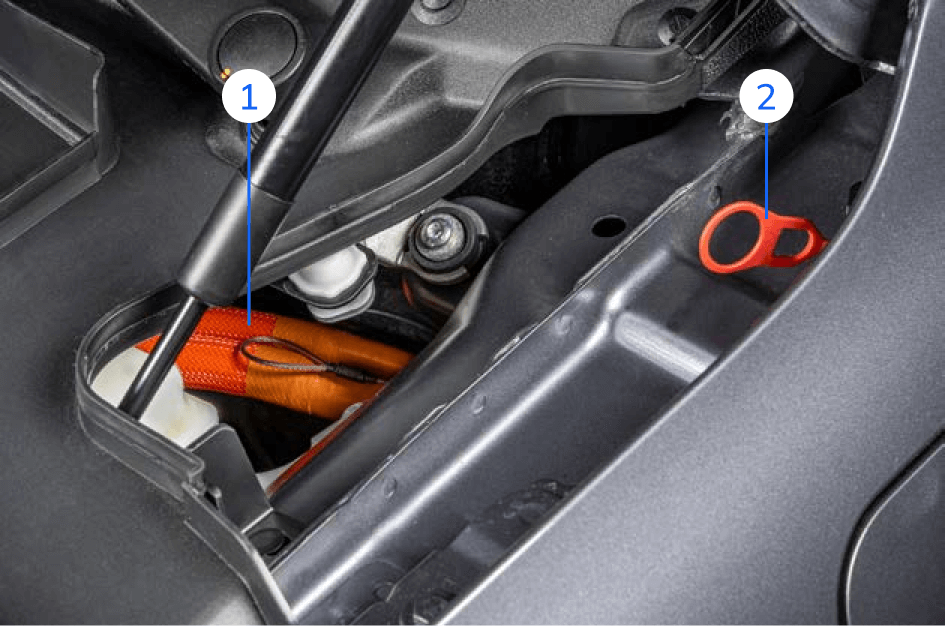
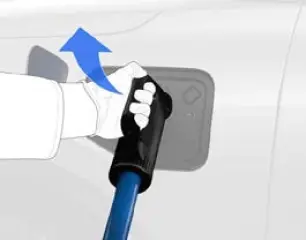
NOTES
There is a second emergency release cable (2) that opens the charging port flap manually if it is not electrically released.
4. Access to the Occupants
Accessing the Vehicle
Opening doors from the outside
Pull the door handle to open the door.
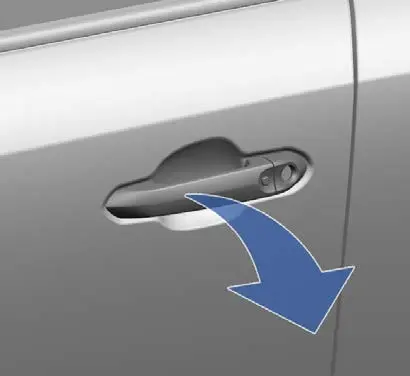
Opening doors from the inside
Pull the door handle to open the door from the inside.
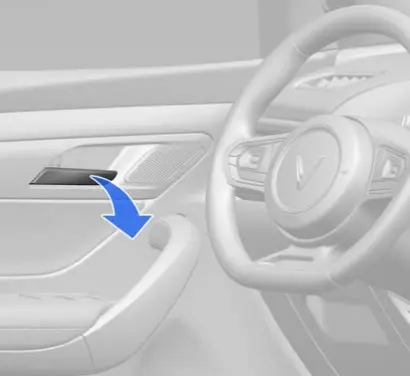
NOTES
If the exterior door handles do not work, reach into the window and pull the interior door handle.
Opening the Hood
Pull the lever below the steering wheel twice to open the hood.
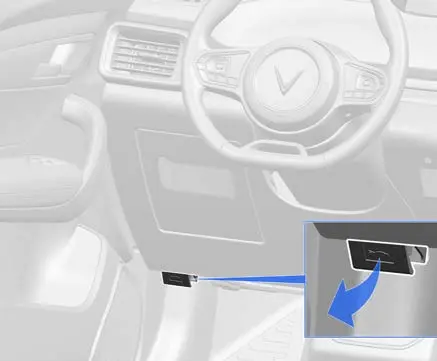
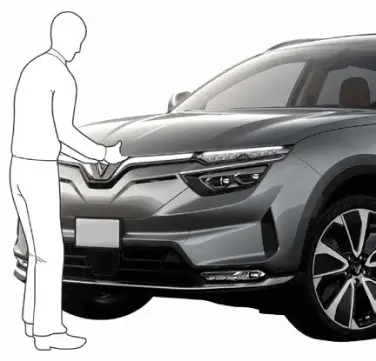
Opening the Tailgate
1. To open the tailgate, press the button at the base of the tailgate.
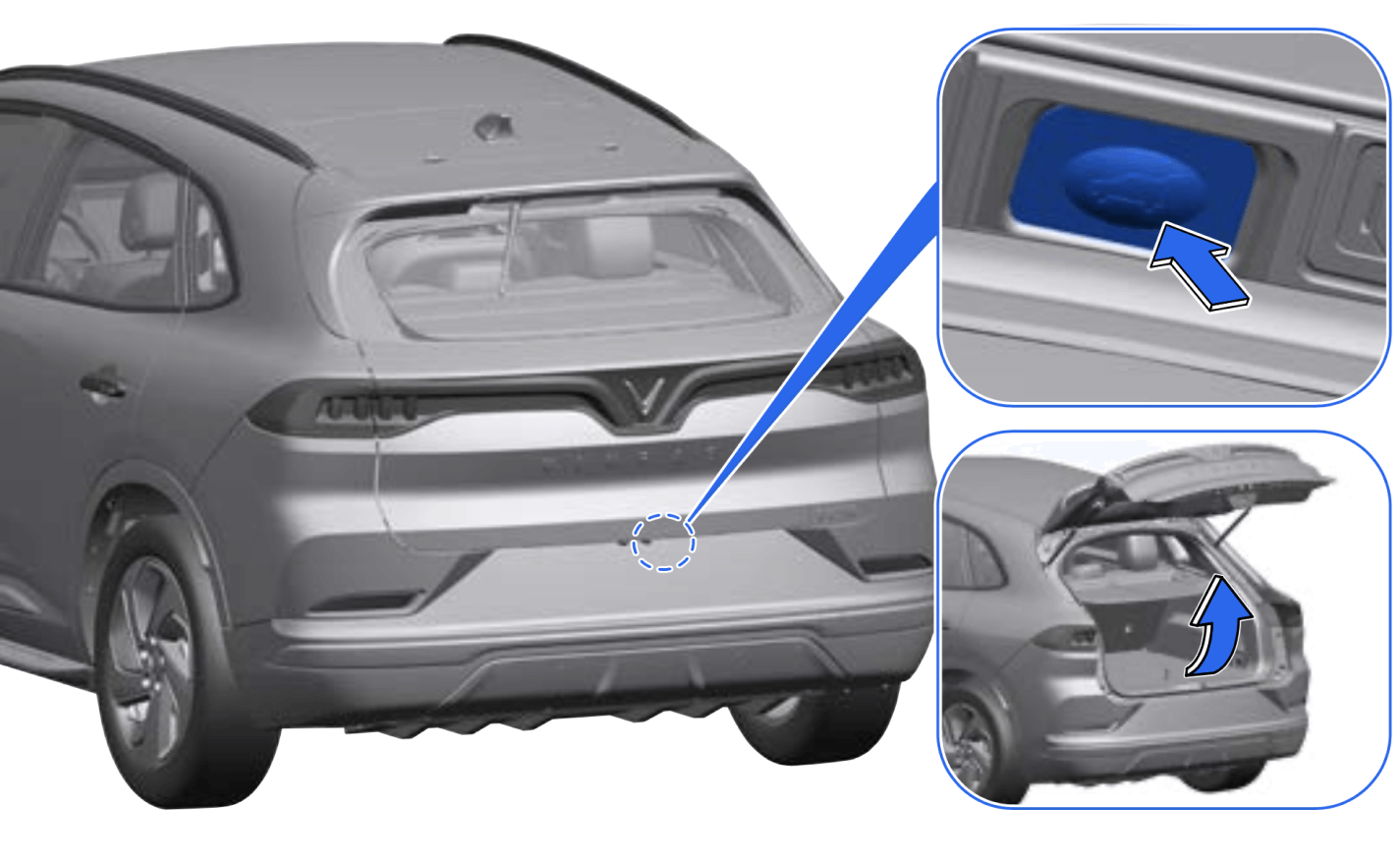
2. If no 12V power is available, the tailgate can be operated manually from inside the vehicle. To access the emergency safety release, open the inside cover on the lower side of the tailgate. Press the white tab to open the tailgate.
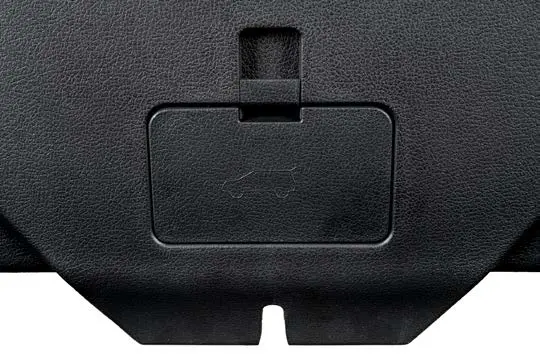
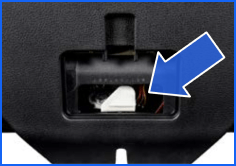
Cutting the Vehicle
DANGER
Always assume that HV parts are energized. Always wear the appropriate PPE. Contact with HV current can cause serious injury or death.
The VF8 has areas that contain HV components and other hazards that could be dangerous if a cut is made. The tailgate contains two gas struts that are pressurized. Dangerous cutting areas are shown in orange.
There is a risk of serious injury or death if a cut is made in these areas.
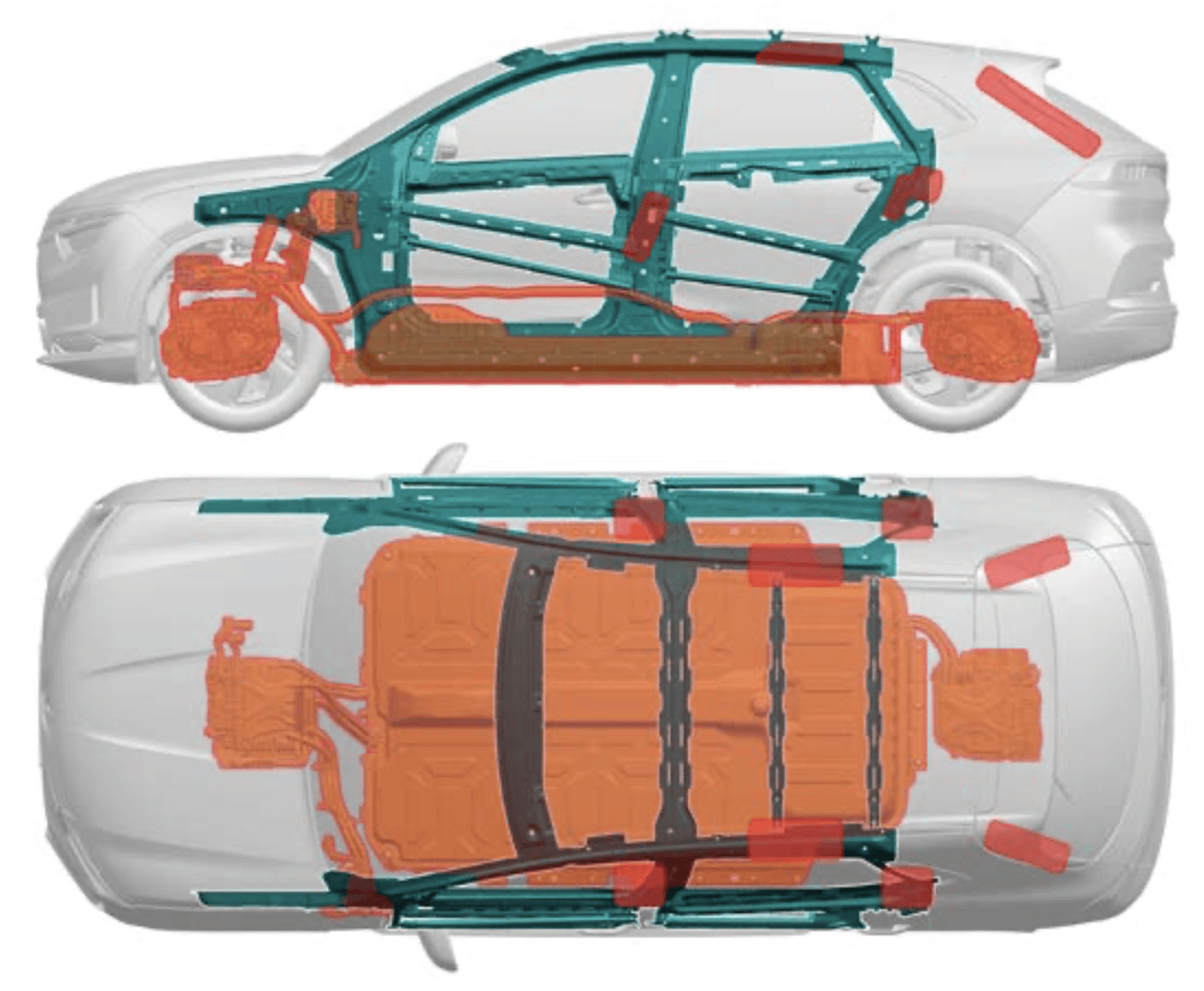
Reinforcement locations
To protect vehicle occupants, extra-high-strength steel is used. Reinforcements are shown in teal.
Powerful cutting equipment must be used to cut or crush these areas.
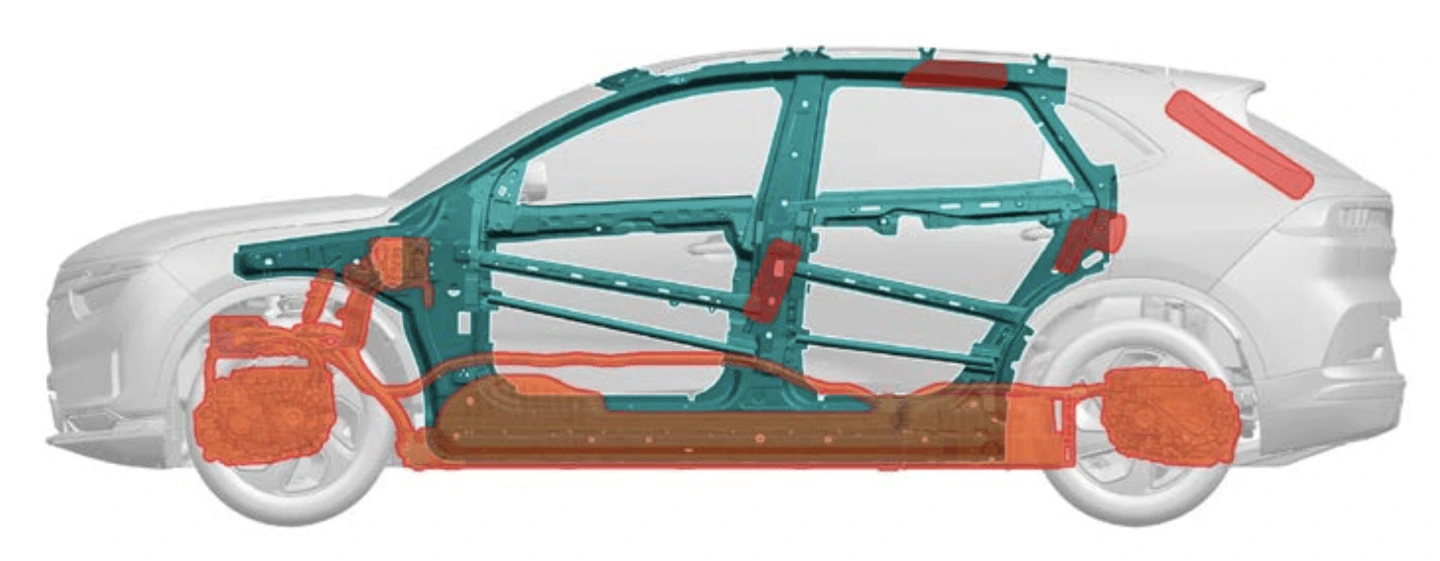
5. Stored Energy
High Voltage Components
DANGER
Always assume that parts are energized. Always wear the appropriate PPE. Contact with HV current can cause serious injury or death.
The VF8 contains High Voltage components. All HV components are marked with warning labels, except for HV cables. The HV cables are easily recognized by their orange warning color.
Examples of warning labels on HV components and batteries:
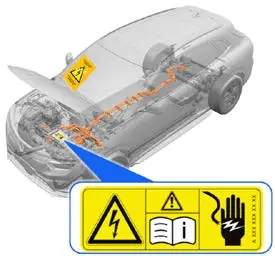
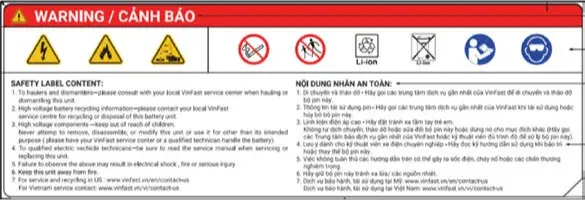
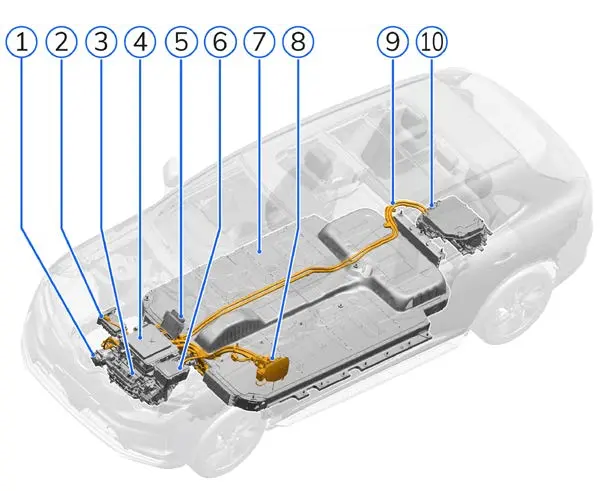

High Voltage Cables
DANGER
The HV system must be disabled before disconnecting any components. Never touch, cut, or disconnect the following items until the HV system is disabled:
-
any orange HV cables
-
any HV connectors
-
any HV components
Failure to do so can result in injury or death due to electric shock.
High voltage cables are displayed in orange.
The VF8 has a first responder cut loop in the front trunk that can be cut twice to disable 12V
power supply to the HV system. See HERE 9 for details.
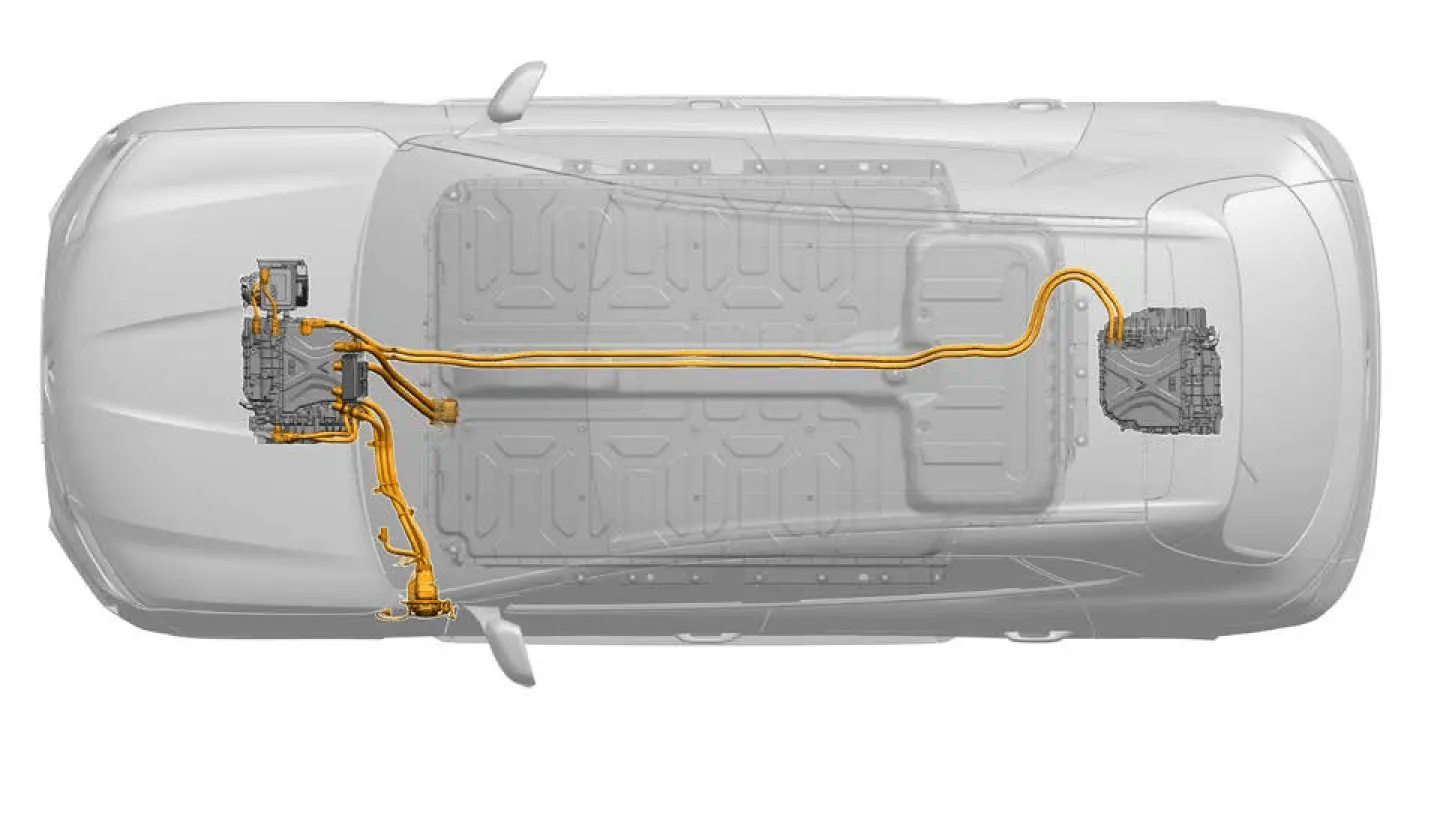
Batteries
WARNING
Do not use the HV battery to lift the vehicle. The battery could become damaged. This increases the risk of injury.
High Voltage Battery
The VF8 has a 400-volt lithium-ion HV battery mounted underneath the floor pan. When using rescue equipment, make sure the floor pan is not breached.
Low Voltage (12V) Battery
The VF8 also has a low-voltage 12V battery located under the hood.
The 12V battery supplies power to the high-voltage contactors. This allows HV current to flow in and out of the HV battery. When the 12V battery is disconnected, HV current cannot flow.
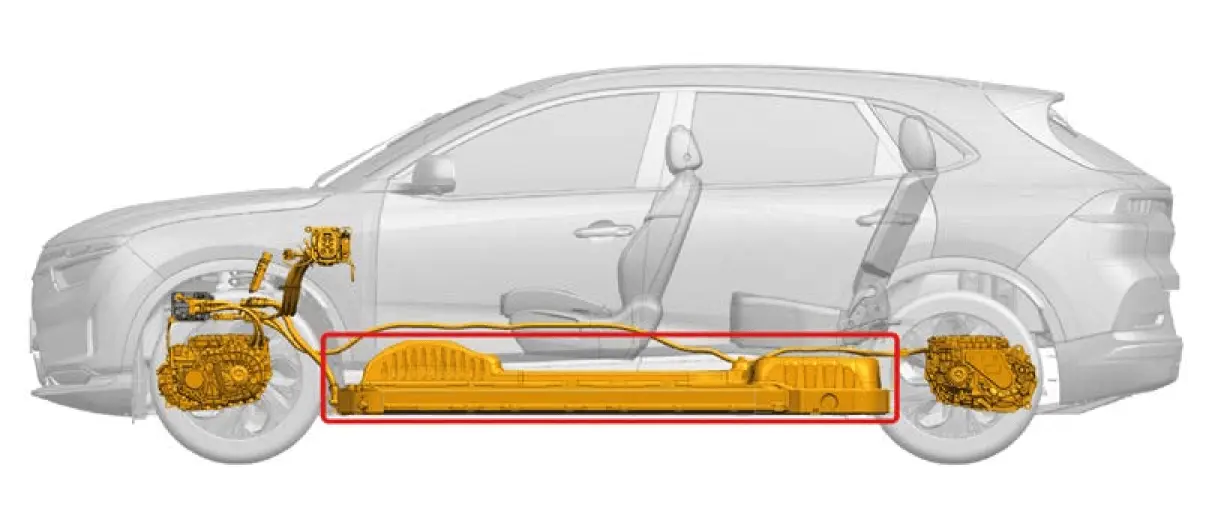
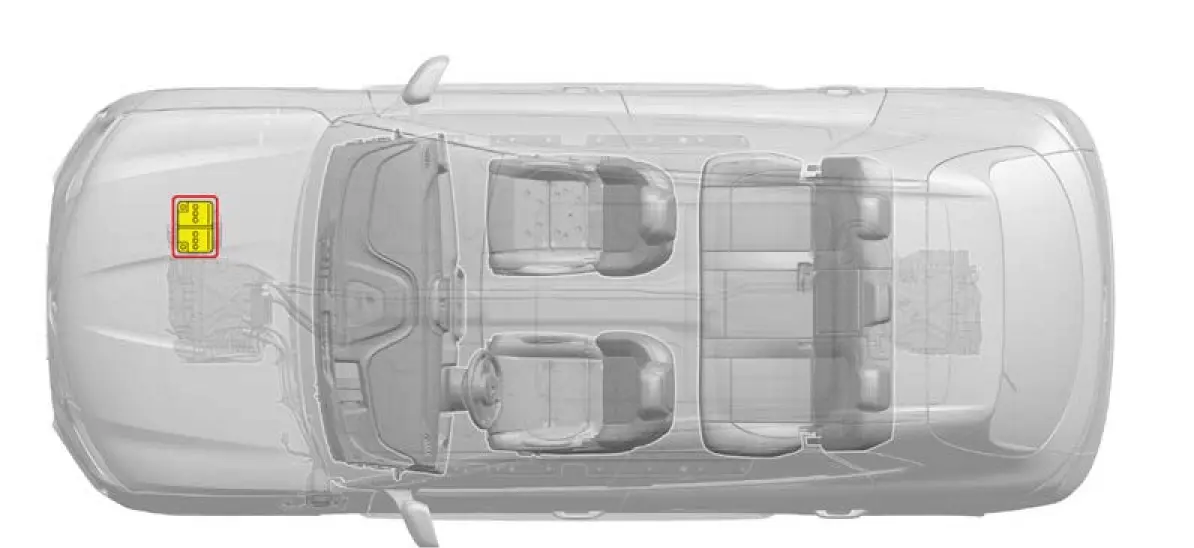
6. In Case of Fire
Extinguishing a Fire
WARNING
If the electrical vehicle is on fire, it can be extinguished with large quantities of water. Use water from a hydrant or other nearby water sources whenever possible.
Lithium-ion batteries can spontaneously self-ignite. Batteries can reignite after a fire has been suppressed. This can occur several hours after an event that causes damage. Always wear the appropriate PPE and self-contained breathing apparatus during firefighting activities.
First responder:
-
Provide large quantities of water to extinguish the fire
-
Monitor the temperature of the battery after extinguishing
-
Arrange for evacuation. Remember that the battery might reignite
-
Quarantine the vehicle in case of reignition
HV battery fires:
-
Flooding a battery with water can extinguish it
-
If no water is available, use a dry chemical or other typical fire-extinguising agent until water is available
-
The battery can create dangerous gases when it ignites
Gaining access to battery:
-
If it’s determined safe to do so, raise or tilt the vehicle to gain dire
-
Do not open the battery
-
Only apply water inside the battery if a natural opening exists
Reignition:
-
The battery could reignite if it is placed near fire
-
Check for remaining heat sources with a thermal imaging camera
-
Make sure the battery is fully cooled before moving the vehicle
NOTES
The HV battery system has lithium-ion cells. If this type of battery catches fire, it has a low risk of explosion because it contains an oxidizer. This type of battery will continue to burn until it is completely burned out.
7. In Case of Submersion
Submersion
DANGER
Recovery of a submerged vehicle without appropriate PPE can result in serious injury or death.
Whether the VF8 is fully or partially submerged, the HV system does not pose an increased risk of electric shock. If the vehicle has suffered serious damage in an accident before being submerged, there could an increased risk of electric shock during recovery. Firefighters should follow established guidelines per NFPA to recover a damaged electric vehicle in a submerged state.
Remove the vehicle from the water and disable the HV system as described on HERE (Method 1). Make sure to wear the appropriate PPE.
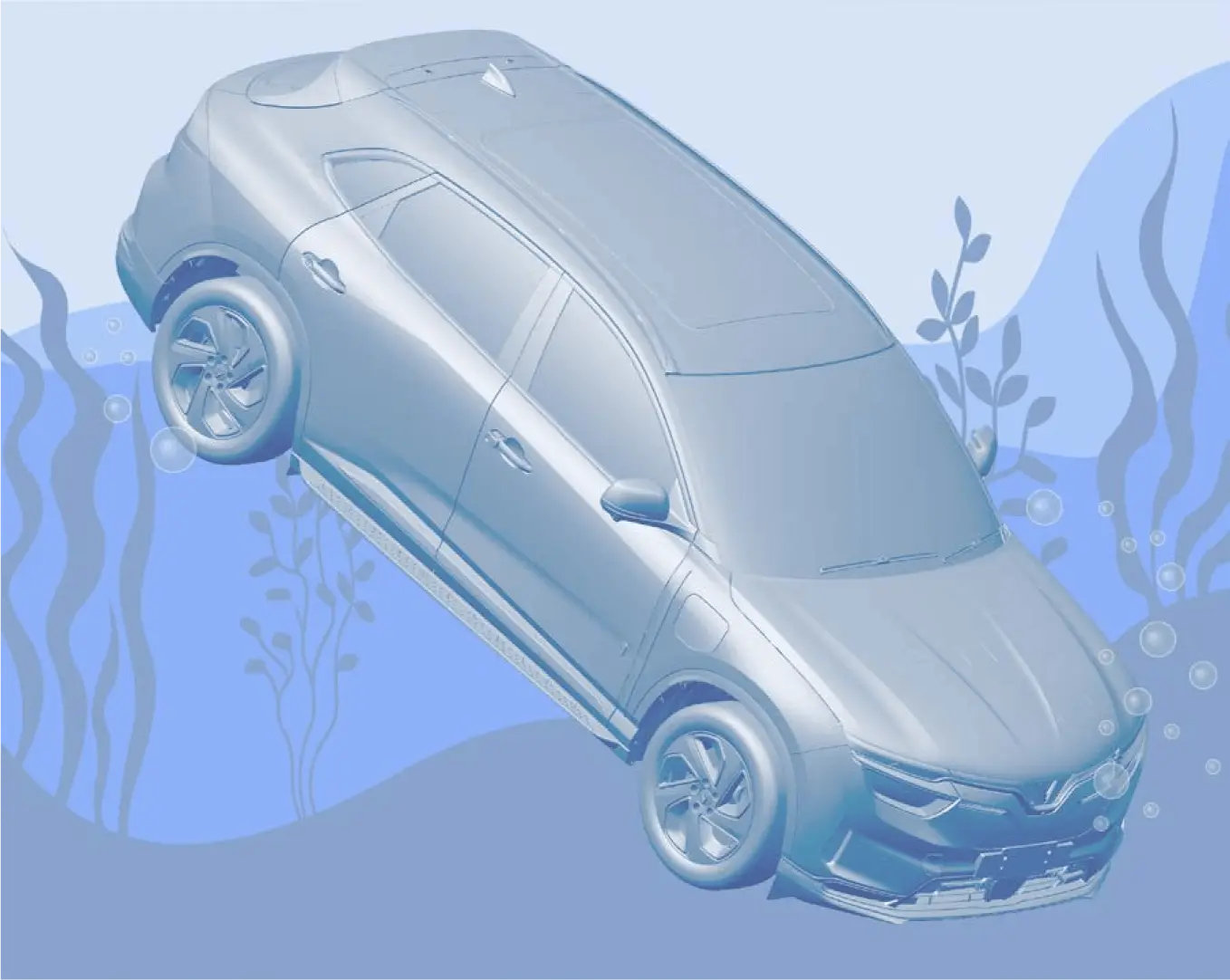
8. Towing, Transportation, Storage
Handling Damaged Vehicle
DANGER
Monitor the battery temperature after a crash to prevent thermal runaway. Thermal runaway can result in a fire or explosion as the batteries release stored energy. Battery cells can release gases in response to chemical reactions occurring inside the batteries.
DANGER
Always assume that HV parts are energized. Alway with HV current can cause serious injury or death
If the VF8 is damaged in a crash, it should be transported to a safe storage location
Isolate the vehicle as follows:
-
Do not park the damaged vehicle in an enclosed building
-
The damaged vehicle should be parked outdoors at a safe distance from other vehicles, buildings, and flammable objects
-
Quarantine areas should be established and used whenever possible
Emergency responders must be notified of a thermal runaway. The battery pack must be cooled to stop the chemical reaction.
Do not push on the floor pan inside the VF8. When using rescue equipment, make sure the floor pan is not breached. The HV battery, or the HV cables may be damaged. Both can result in serious injury or death.
Vehicle damage
A damaged electric vehicle must not be touched without the proper PPE

Towing
WARNING
Lithium-ion batteries can spontaneously self-ignite. Batteries can reignite after a fire has been suppressed. This can occur several hours after an event that causes damage. Always wear the appropriate PPE.
The HV system must be switched off before transporting the vehicle.
The VF8 must be fully placed on a tow truck bed for transporting. Set the gear to Neutral (N), disengage the parking brake, and turn off the vehicle.
When towed, the vehicle must not have any wheels in contact with the road surface. The wheels must be secured properly using an eight-point tie-down method.
Drive units
The VF8 has two electric drive units: front and rear. The HV battery sends direct current (DC) energy to the Electric Drive System (EDS) to rotate the wheels.
Wheel rotation can generate electricity in the EDS. This could result in overheating of HV components or cause further damage. The wheels should be chocked to prevent movement.
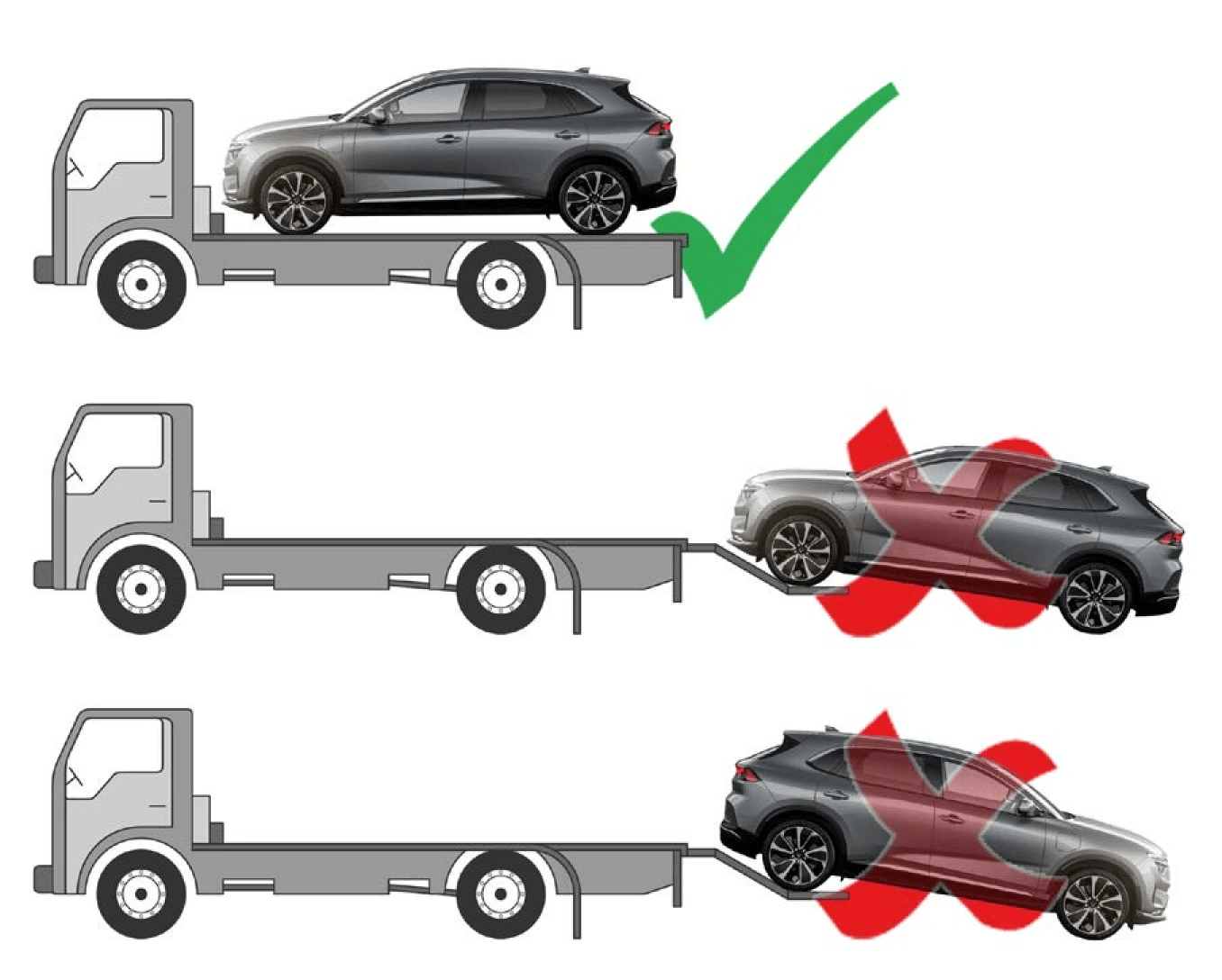
9. Important Additional Information
Airbags
Airbags are installed throughout the VF8, including seat-mounted airbags in the front and rear seats.
When an airbag is deployed, the vehicle will deactivate high voltage in all components and cables except the HV battery.
Air bag locations are identified in purple
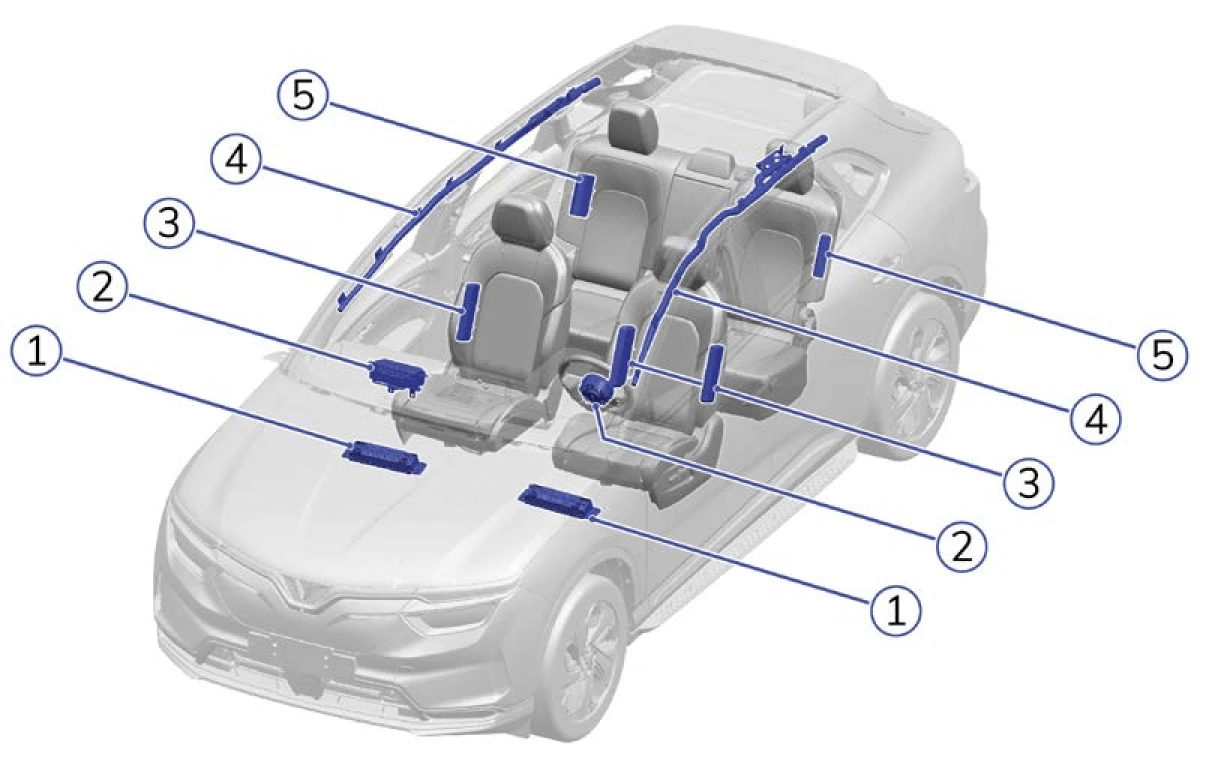
-
Knee airbags
-
Central airbags
-
Seat-mounted side airbags
-
Curtain-airbags
-
Rear side airbags
Inflators
WARNING
There are safety risks present when cutting the vehicle. Follow all safety precautions when working on pyrotechnic devices. Failure to comply could result in serious injury or death.
Airbag inflation cylinders are located above the rear windows. They are outlined in red
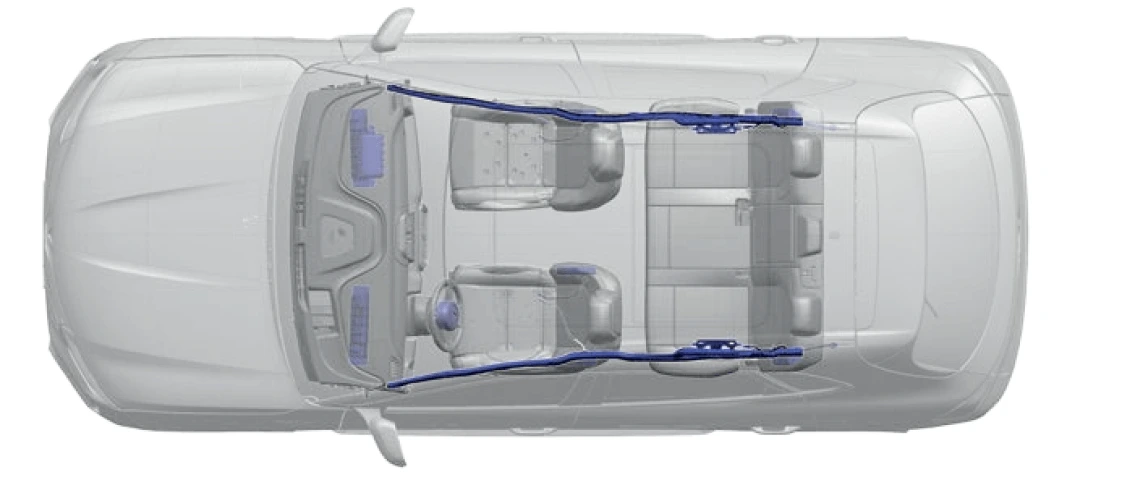
Seat Belt Pre-Tensioners
Pyrotechnic seat belt pre-tensioners are located at the bottom of the B-pillars and behind the rear seats. The seat belt pre-tensioners are outlined in red
